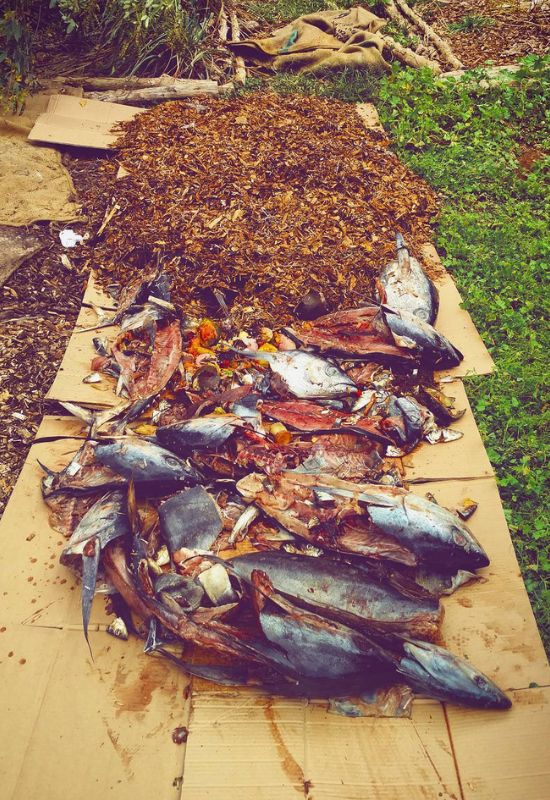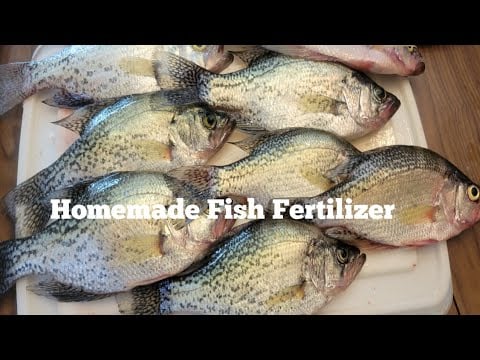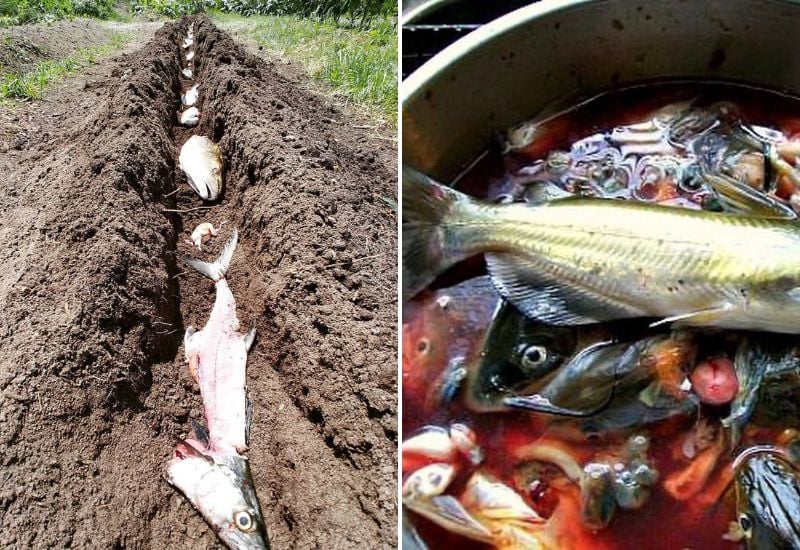
There are many ways to fertilize your garden, some less smelly than others, and perhaps the smelliest is fish scraps.
Fish scraps have the benefit of building your soil, adding nutrients (especially nitrogen), and reducing garbage that often ends in the landfill or pollutes the environment.
The downsides, besides the smell, are that fish scraps can contain pathogens, parasites, and heavy metals, and they can attract unwanted animals into your garden.
Maybe you have a pile of fish scraps that you just can bear to see go to the landfill. Or maybe you have access to fresh fish guts and you want to give it a try adding fertility to your garden.
Whatever the reason, here are the four best ways to use fish scraps in your garden, and tips on how to do so safely.
What Fish Scraps Do For Your Garden
Fish have been used in the garden since antiquity. Fish scraps can provide many good benefits to soil and plants, but there can be some very dangerous results if it is not handled prudently. Here are the pros and cons of fish scraps for the home gardener.
Benefits
Here are some ways that fish scraps can improve your soil and help your plants grow.
Disadvantages Of Fish Scraps
Despite its advantages and long-standing history, using fish scraps in the garden should be done with care as there are several problems that can arise.
The Indigenous Peoples are well known to have long used fish scraps to grow their crops. However, while this can still be a viable agrarian practice, we must remember that our agricultural predecessors were not dealing with the polluted waters and contaminated fish that we are exposed to today.
(And they didn’t have nosey neighborrs complaining about the stinking smell fromyour yard).
Here are some of the dangers of using fish waste in your garden:
Where To Get Fish Scraps
Using fish in your garden should be done with consideration of the environmental and ethical impact. Where you source your fish is perhaps the biggest concern.
Most fish that you buy are from fish farms, and there is growing concern about the environmental impact of these aquaculture farms.
Buying or catching fish with the intention of using the whole creature in the garden is extremely wasteful.It is far more responsible to use the inedible remains including the head, bones, organs, feces, and other offal.
Also, using fish scraps on a large scale can pollute the soil and groundwater as dangerous bacteria builds up or washes away.
Is It Better To Buy Fish Fertilizer?
In terms of pathogens and other health concerns, it is probably better to buy fish fertilizers since they have been processed to remove these problems.
Purchased fish fertilizers come in several forms:
While purchased fish fertilizers can cause fewer health concerns than using your own fish scraps, they can have just as many environmental concerns.
Ways To Use Fish Fish Scraps In Your Garden
If you are turned off by the thought of using dead fish in your garden but still want the same results, consider using an alfalfa meal for a healthy dose of vegan nitrogen.
However, if you want to give fish scraps a try in your garden, here are the 4 most common ways to use fish waste for adding fertility to your soil.
1: Bury Fish Scraps Under Plants
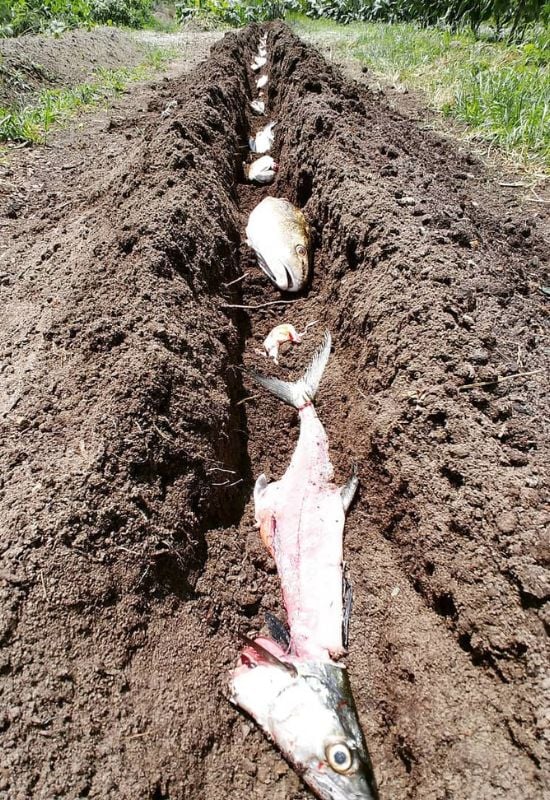
This is probably the most common way to use fish scraps in the garden, and many Indigenous farmers used to bury a fish head under a corn seed to help it grow.
Here are some tips for burying fish scraps directly in the garden:
Fish scraps decompose relatively quickly compared to other meats or dead animals. At the end of the year, all that will be left of your fish scrap is a few clean bones.
Many gardeners notice a dramatic improvement in their plants when grown over a decomposing fish head, including healthier and stronger growth,
improved productivity, and longer growth for annuals.Here is an interesting video showing the results of growing tomatoes on top of fish heads.
2: Blended Fish Scraps
Another common way to use fish scraps in the garden is to simply blend them with water and spread them as a fertilizer. This is probably the least desirable way to use fish scraps in the garden.
First of all, it smells. Second, you are simply spreading a slurry on the ground where it will become a stinking rotten mess that attracts flies.
It can also be lightly incorporated into the soil, but this does not alleviate the smell nor keep insects and critters away.
It would be far better to blend your fish and then pour the mixture in a whole under your plants as mentioned above. Blending the fish first has the added advantage that the small pieces will decompose faster.
3: Make Your Own Fish Emulsion
Making your own fish emulsion creates a liquid natural fertilizer you can add to your garden. It is quite simple though it is smelly.
Materials You need
Follow these simple steps to make DIY fish emulsion fertilizer.
Fish emulsion is a fast-acting fertilizer that will provide nutrients for the individual plants but will not improve the garden as a whole.
4: Composting Fish Scraps
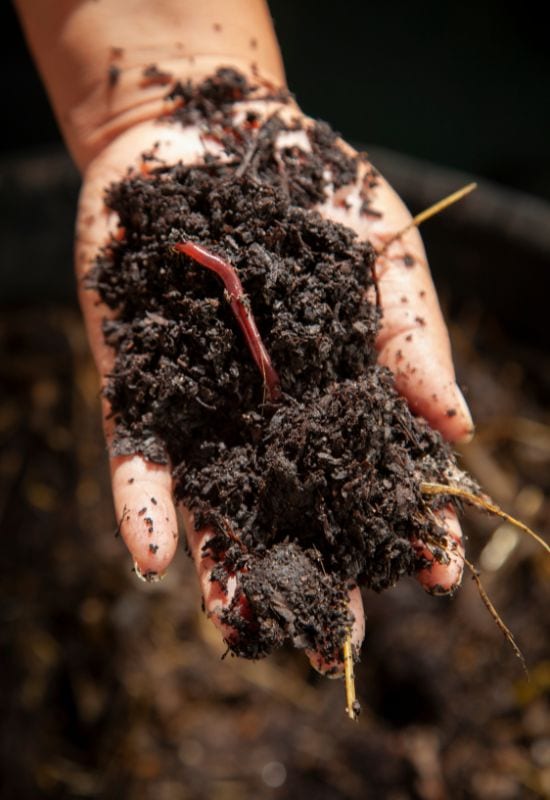
I am largely against using any meat, dairy, eggs, and also fish in the compost. They are harbingers of pests and pathogens and should not be used lightly in the home garden. You can check this list of household waste items that you should leave out of your compost pile.
Fish may work fine in large composting facilities, but they generally do not have a place in the backyard heap.
If you do choose to compost fish, here are a few safety practices to follow:
It is important to remember that adding fish scraps does NOT increase the nitrogen content of your finished compost. Unlike burying fish scraps in the ground where the nutrients are released directly into the soil,
composting decomposes the organic matter and turns it into rich humus. Humus is a finished product and it has (roughly) the same nutrient composition whether it is made from plant or animal sources.
Conclusion
Using animal products in a garden is a bone of contention for many growers, as is the health and safety of using raw fish (either for eating or for growing food to eat).
I hope this article has presented enough information for you to make a wise decision for yourself. Whether you use fish or not, always be careful with what you put in your soil, and your soil will reward you with beautiful flowers and a bountiful harvest.

Written By
Amber Noyes
Amber Noyes was born and raised in a suburban California town, San Mateo. She holds a master’s degree in horticulture from the University of California as well as a BS in Biology from the University of San Francisco. With experience working on an organic farm, water conservation research, farmers’ markets, and plant nursery, she understands what makes plants thrive and how we can better understand the connection between microclimate and plant health. When she’s not on the land, Amber loves informing people of new ideas/things related to gardening, especially organic gardening, houseplants, and growing plants in a small space.

